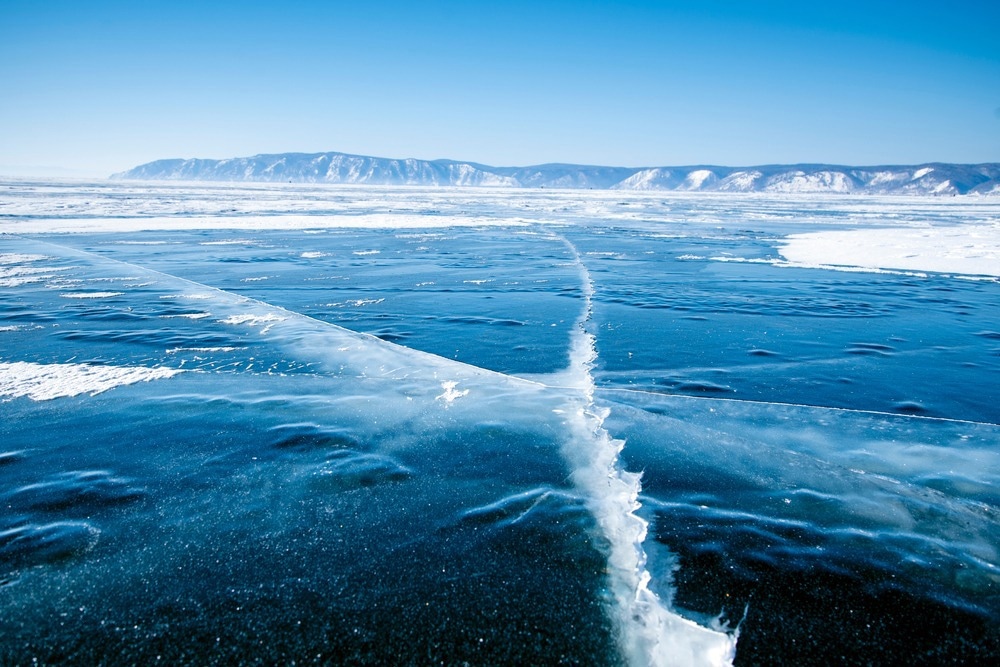According to recent studies, the frozen methane known as “fire-ice,” which is locked under the oceans as a solid, is susceptible to melting as a result of climate change and may end up in the ocean.

Image Credit: JBOCreative/Shutterstock.com
Strong greenhouse gas methane is released as frozen methane and ice melt, and this gas travels from the deepest recesses of the continental slope to the ocean shelf's edge. This discovery was made by an international research team headed by Newcastle University. They even found a pocket that had traveled 40 km, or 25 miles.
The researchers, publishing in the journal Nature Geoscience, assert that this indicates a significant amount of methane might be at risk of vulnerability, potentially leading to its release into the atmosphere due to climate warming.
Methane Hydrate
Methane hydrate, sometimes called fire-ice, is an ice-like substance buried beneath the ocean floor and holds methane. Under the water, vast amounts of methane are preserved as marine methane. As the oceans warm, it thaws, releasing methane into the oceans and the atmosphere. This released methane, referred to as dissociated methane, contributes to the phenomenon of global warming.
The scientists examined the piece of the hydrate that dissociated during climatic warming off the coast of Mauritania in Northwest Africa using sophisticated three-dimensional seismic imaging techniques.
They pinpointed a distinct instance where dissociated methane traveled a distance exceeding 40 kilometers, ultimately being emitted through a series of submerged indentations referred to as pockmarks during previous warm periods.
It was a Covid lockdown discovery, I revisited imaging of strata just under the modern seafloor offshore of Mauritania and pretty much stumbled over 23 pockmarks. Our work shows they formed because methane released from hydrate, from the deepest parts of the continental slope vented into the ocean. Scientists had previously thought this hydrate was not vulnerable to climatic warming, but we have shown that some of it is.
Richard Davies, Study Lead Author, Professor, and Pro-Vice-Chancellor, Global and Sustainability, Newcastle University
The impact of temperature variations in the bottom water close to continental boundaries on methane release from hydrates has been the subject of earlier research. Still, most of these investigations were conducted in regions containing a relatively modest fraction of the world's methane hydrates. This is one of very few that look into the methane emission from the deeper underwater base of the hydrate stability zone. The findings indicate that a considerable amount of methane that was released from the hydrate stability zone moved in the direction of land.
This is an important discovery. So far, research efforts focused on the shallowest parts of the hydrate stability zone, because we thought that only this portion is sensitive to climate variations. The new data clearly show that far larger volumes of methane may be liberated from marine hydrates and we really have to get to the bottom of this to understand better the role of hydrates in the climate system.
Dr. Christian Berndt, Professor and Head, Research Unit Marine Geodynamics, GEOMAR, Kiel
After carbon dioxide (CO2), methane is the second most prevalent anthropogenic greenhouse gas. According to data from the US Environmental Protection Agency, methane makes up roughly 16% of greenhouse gas emissions worldwide.
The findings of this study may be very helpful in predicting and mitigating the effects of methane on the changing climate.
The team intends to persist in their quest for signs of methane vents along the margin and endeavor to forecast the probable locations of extensive methane seepages as the planet undergoes warming. Currently, the researchers are devising a scientific cruise aimed at drilling into the pockmarks to establish a closer connection between these formations and past climatic warming episodes.
Journal Reference:
Davies, J, R., et al. (2023). Long-distance migration and venting of methane from the base of the hydrate stability zone. Nature Geoscience. doi/s41561-023-01333-w